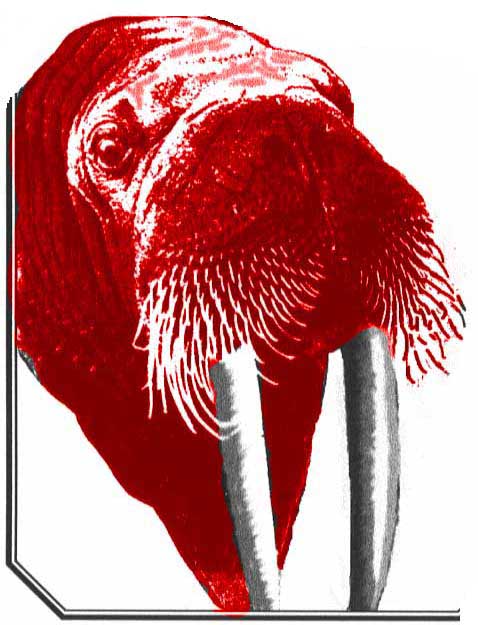
Buried articles, from native subsistence hunts and natural death, the bone from walruses which lived as long ago as pre- ice age, frozen and buried in many cases for thousands of years, are collected to be hand carved at Ekemo Studios into collector quality pieces.
Due to mineral absorption and the significant age of these old materials, there is a soft subtle coloring from browns to a light cream beig inherent, and unique to each piece.
Ekemo Studios uses no materials from animals currently being hunted , all materials are pre-act materials to which the Marine Mammal Protection Act does not apply. (Retroactive affect) Sec 102e.
Ekemo Studios walrus bone carvings are hand made in Alaska and signed by Alaskan Artists.

1. Class: Mammilla Order: Pinnipedia Family: Odobenidae Genus species: Odobenus rosmarus
2. Male walruses weigh up to almost 4,000 lb. Females up to 2,750 lb.
3.The Atlantic walruses are smaller than pacific walruses.
4. Walruses prefer to eat mollusks such as clams. They also eat worms, snails, squids, and crabs.
5. Walruses spend about sixty to seventy percent of their lives in the water.
6. Walruses live where the temperature is about 0-40 degree F.
7. Blubber insulates the walrus. Blubber may be up to 5 or 6 inches thick.
8. Blubber is about one-third of a walrus' total body mass. Blubber also functions as an excess energy reserve.
9. A walrus has about six hundred whiskers in rows on its snout called vibrissae. They are attached to muscles and have blood and nerves. A walrus moves its snout in the bottom of the ocean sediment to find food. Walruses may also take in mouthfuls of water and squirt streams at the sea floor to dig up clams and other mollusks.